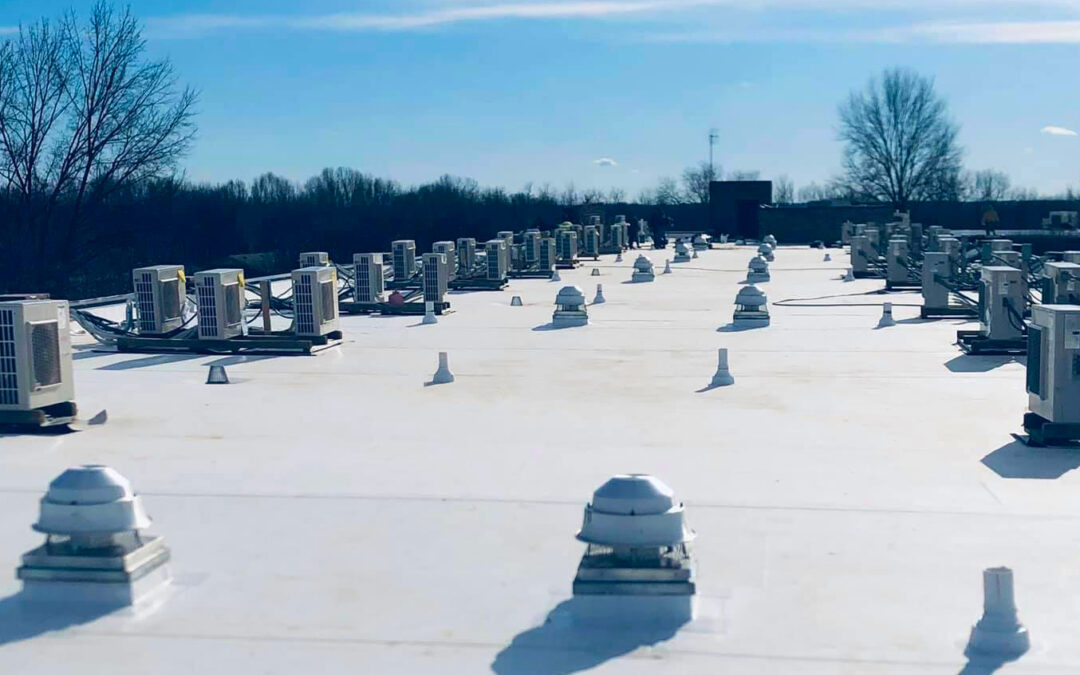Maintaining the integrity of a commercial roof is crucial for protecting your business, assets, and employees. Regular inspections can help identify potential issues before they escalate into costly repairs or replacements. Here’s a comprehensive checklist of 10 essential things to look for during a commercial roof inspection to ensure your roof remains in top condition.
Surface Damage
Start by inspecting the roof’s surface for any visible damage. Look for cracks, blisters, punctures, and tears in the roofing material. These can be caused by weather, debris, or foot traffic and lead to leaks if not addressed promptly.
Standing Water
Check for areas where water pools or remains stagnant after a rainstorm. Standing water can lead to deterioration of the roofing material and create an environment for mold growth. Ensure proper drainage systems are in place and functioning.
Membrane Condition
Examine the condition of the roof membrane. Look for signs of wear and tear, such as thinning, brittleness, or splitting. The membrane is a critical component of your roof’s waterproofing system, and any damage should be repaired immediately.
Flashing Integrity
Inspect the flashing around roof penetrations, such as vents, chimneys, skylights, and HVAC units. Flashing prevents water from seeping into the building at these vulnerable points. Check for any signs of corrosion, cracks, or separation from the roof surface.
Seals and Joints
Examine all seals and joints on the roof. Sealants can degrade over time due to UV exposure and temperature fluctuations. Ensure that all joints are properly sealed to prevent water infiltration.
Roof Edges
Pay special attention to the edges of the roof. Check for signs of damage or wear, such as loose or missing edge materials. The roof edge is a common area for wind damage, which can compromise the entire roofing system.
Drainage Systems
Ensure that all gutters, downspouts, and drains are clear of debris and functioning correctly. Blocked drainage systems can lead to water pooling on the roof, increasing the risk of leaks and structural damage.
Roof Coatings
If your roof has a protective coating, inspect it for signs of wear, peeling, or blistering. Roof coatings provide an additional layer of protection against the elements and can help extend the life of your roof.
Vegetation Growth
Look for any signs of vegetation growth on the roof. Moss, algae, and other plants can retain moisture and cause damage to the roofing materials. Remove any vegetation and consider applying a roof treatment to prevent future growth.
Structural Elements
Lastly, inspect the roof’s structural elements, such as beams, supports, and decking, for signs of rot, rust, or other structural damage. A professional should address any compromised structural elements to ensure the roof’s safety and stability.
Regular commercial roof inspections are essential for maintaining the health and longevity of your roof. By following this checklist and addressing any issues promptly, you can prevent minor problems from becoming major expenses. If you’re unsure about the condition of your commercial roof or need professional assistance, don’t hesitate to contact a trusted roofing contractor like Shrum’s Roofing Company. Investing in regular maintenance and inspections can save you time, money, and headaches in the long run.

